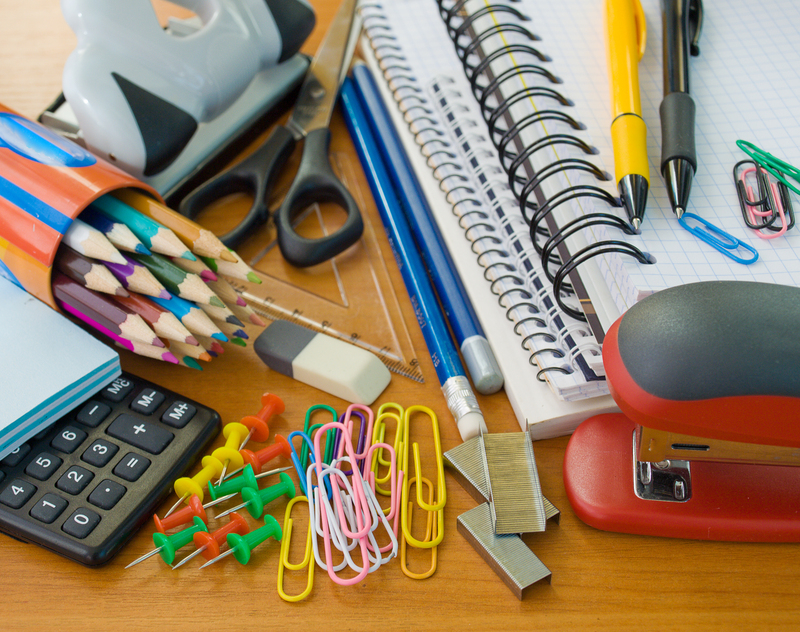Simple Steps to Responsibly Discarding Old Pots and Pans
Every kitchen accumulates worn-out cookware over time, leaving many people wondering how to safely and sustainably dispose of old pots and pans. If you're seeking practical, eco-conscious, and efficient ways to manage your outdated cookware, you're in the right place! This informative and reader-friendly guide explores various methods to responsibly discard cookware, ensuring you keep your home organized while protecting the environment.

Why Proper Disposal of Old Pots and Pans Matters
Pots and pans disposal isn't just a matter of decluttering. Many cookware items contain materials that should be handled with care. Non-stick coatings, composite handles, and mixed metals mean they don't always belong in your regular garbage or recycling bin. Improper disposal can:
- Contribute to landfill waste, increasing environmental harm.
- Leach toxic substances if not handled correctly, especially with non-stick coatings.
- Miss out on recycling opportunities for valuable metals like aluminum and steel.
By learning how to discard your old pots and pans responsibly, you help reduce your environmental impact and sometimes even benefit your community.
Assess the Condition: Can Your Old Cookware Be Reused?
Before you discard your cookware, take a moment to assess its condition. Is your pan simply scratched, or is it warped and unsafe to use? Sometimes, pots and pans can be given a second life through donation or repurposing. Here's how you can decide:
Questions to Ask Yourself:
- Does the pan have a damaged or worn non-stick surface?
- Is it heavily rusted or warped beyond repair?
- Can it be cleaned or refurbished?
- Is it still safe and usable for others?
Answering these questions will help you determine the best next steps. Reusing saves resources and reduces waste, making it the most sustainable option where possible.
Donation: Give Old Pots and Pans a New Home
If your old cookware is still functional, consider donating it. Many organizations and individuals can benefit from gently used pots and pans. Here are some great ways to donate:
Where to Donate Used Cookware:
- Thrift stores and charity shops (Goodwill, Salvation Army, local charities)
- Homeless shelters and women's shelters
- Soup kitchens and community centers
- Local churches or civic organizations
Always call ahead to confirm they are accepting donations of cookware, as requirements may vary. Donating not only helps others, but also keeps your pans out of landfills.
Repurpose: Creative Uses for Old Pots and Pans
Sometimes, a scratched pan might not be perfect for cooking but can serve other purposes. Get creative and turn your old pots and pans into useful household or garden items!
Creative Repurposing Ideas:
- Planters: Old pans make quirky plant pots for herbs or flowers.
- Organizers: Use pans to store tools, toys, or art supplies.
- Craft birdbaths or feeders from larger pots or skillets.
- Convert handles into kitchen hooks or rails.
- Make decorative wall art with uniquely shaped or vintage pans.
With a little imagination, discarded cookware can have a second, non-cooking life!
Recycling: The Eco-Friendly Disposal Option
When donation and repurposing aren't possible, recycling old pots and pans is the next best step. But how do you recycle such items responsibly?
Check Your Local Recycling Program
Most household recyclables are limited to cans, bottles, and paper. However, many cities and municipalities accept scrap metal, which includes old metal cookware. Here's how to do it:
- Contact your city's recycling center or waste authority.
- Ask specifically if they accept pots and pans in curbside pickup or at drop-off locations.
- If not accepted in regular bins, ask for scrap metal recycling locations.
Prepare Pots and Pans for Recycling
- Remove non-metal parts if possible (plastic handles, lids, or non-metal attachments).
- Clean the items before dropping them off or placing them in recycling bins.
- Check for hazardous coatings like Teflon; some recycling centers require coatings to be removed or treated separately.
Special Considerations for Non-Stick and Coated Pans
Not all old cookware is treated the same. Non-stick, enameled, and ceramic-coated pans pose unique recycling and disposal challenges.
How to Discard Non-Stick Pots and Pans Responsibly
- Contact the manufacturer: Some brands offer take-back or recycling programs for their own products.
- Research hazardous waste options: In some areas, non-stick coatings are treated as hazardous due to chemicals like PTFE (Teflon).
- Never burn or incinerate coated pans, as this releases toxic fumes.
- Always remove plastic handles and dispose of them separately if required by your recycler.
Don't forget: each community has different rules for disposing of non-stick cookware. Always check your local guidelines.
Disposing Pots and Pans in Regular Trash: The Last Resort
If you can't donate, repurpose, or recycle your old pots and pans, disposing them in the trash is your last option. Here are some important tips:
- Wrap broken or sharply-edged items securely to avoid injuring sanitation workers.
- Check your municipal guidelines: Some areas have size or weight restrictions for discarding large items.
- Label bags or boxes containing heavy cookware.
- Dispose of hazardous-coated pans according to hazardous waste instructions when required.
Sell or Swap: Making Use of Cookware in Good Condition
Another sustainable and community-minded way to dispose of old pots and pans is by selling or swapping. You might be surprised at just how popular vintage cookware is!
Where to Sell or Swap Cookware:
- Online marketplaces (eBay, Facebook Marketplace, Craigslist)
- Yard and garage sales
- Local swap groups or Buy Nothing communities
- Community bulletin boards and college campuses
Bargain hunters, college students, and DIYers are often on the lookout for affordable cookware. With some clear photos and honest descriptions, your old frying pan or saucepan could find a happy new home.
Manufacturer Take-Back and Buy-Back Programs
Some cookware brands now offer take-back recycling programs. Companies such as TerraCycle or brands like Calphalon, GreenPan, and Tefal sometimes provide mail-in recycling services for their products. Here's how to participate:
- Visit the manufacturer's website for details and registration.
- Follow carefully outlined packaging instructions for used cookware.
- Mail back your old pans to ensure they are recycled properly.
- Sometimes, manufacturers offer discounts on new cookware for returned items.
This is one of the most responsible options for recycling old pots and pans, as manufacturers have direct control over the recycling process.
Summary: The Best Way to Get Rid of Old Pots and Pans
- Start with reuse: donate or sell if they are still in usable condition.
- Repurpose creatively for new functions around the home or garden.
- Next, pursue recycling through local scrap metal programs or manufacturer take-back schemes.
- For non-stick or coated cookware, follow hazardous waste guidelines.
- Only place in the regular trash if all responsible options are exhausted--and always follow local rules.
Tips for Reducing Future Cookware Waste
Sustainable Cookware Habits:
- Invest in higher quality cookware that lasts longer and resists warping or surface damage.
- Care for your pans with gentle cleaning and proper storage.
- Avoid harsh utensils that scratch or damage non-stick coatings.
- Consider eco-friendly upgrading with recycled or recyclable materials.

Frequently Asked Questions on Disposing Pots and Pans Responsibly
1. Can I put old pans in recycling bins?
Most home recycling bins do not accept cookware due to mixed materials. Check with your local recycling center for drop-off options.
2. Are non-stick pans dangerous to recycle?
They may carry hazardous coatings; always ask your recycler about safe handling of non-stick materials.
3. What other items can go into scrap metal recycling?
Besides pans and pots, you can recycle metal tools, old cutlery, pans, and some appliances--if free from hazardous materials.
4. Should I remove handles and lids before recycling?
Yes, if possible--especially non-metal parts. This makes sorting and processing easier and more effective.
Conclusion: Small Steps, Big Impact
Discarding old pots and pans responsibly doesn't need to be complicated, but it does require a little extra care. By donating, repurposing, recycling, selling, or participating in manufacturer programs, you make a positive contribution to both the planet and your local community. Every step you take reduces landfill waste and sets the stage for more sustainable living, one pan at a time--and that's something to celebrate!
Take the next step today. Look through your cabinets, choose the best method for your old cookware, and join a growing movement towards more responsible, eco-friendly living.
